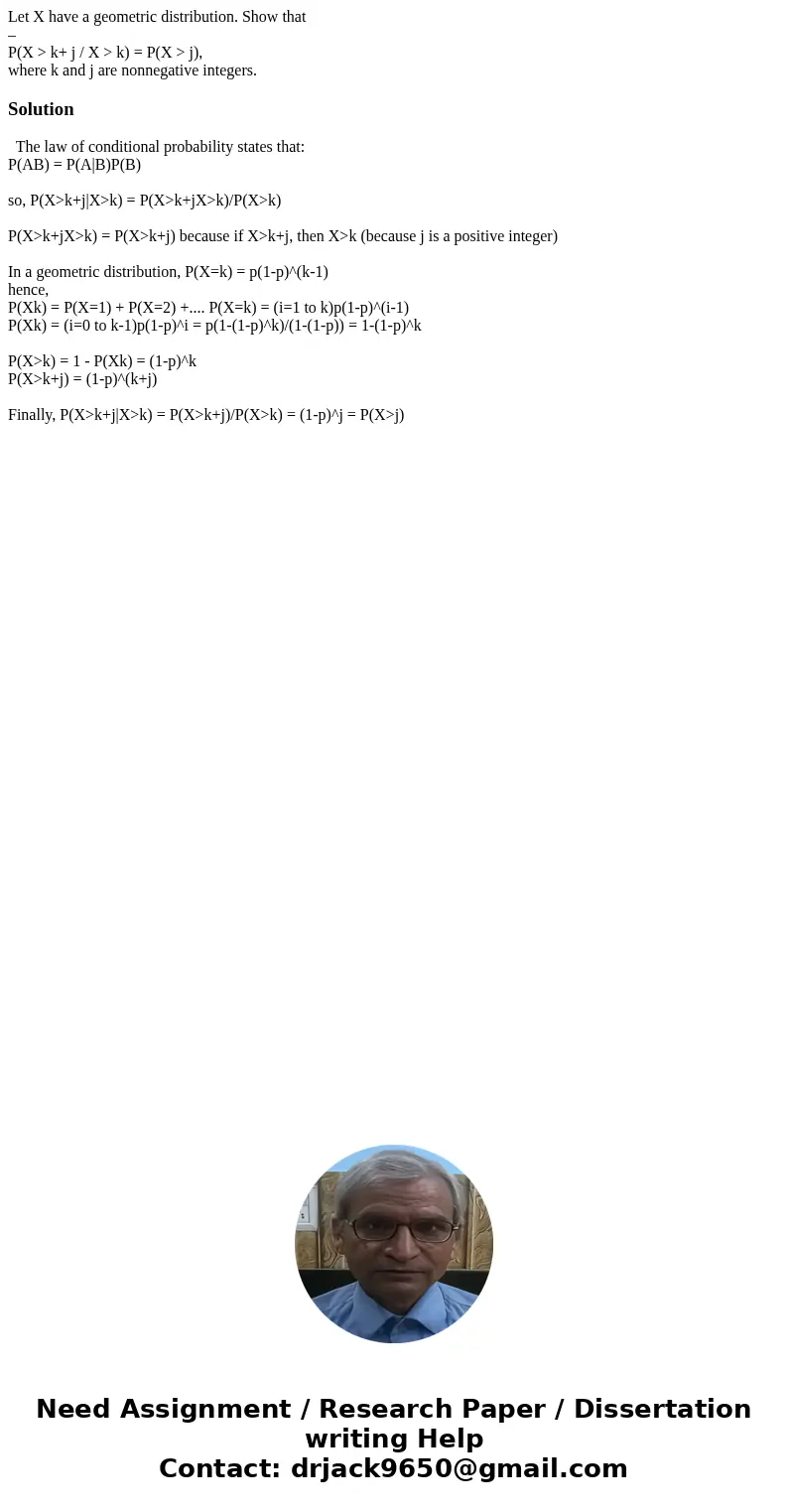Let X have a geometric distribution Show that PX k j X k
Let X have a geometric distribution. Show that
–
P(X > k+ j / X > k) = P(X > j),
where k and j are nonnegative integers.
Solution
The law of conditional probability states that:
P(AB) = P(A|B)P(B)
so, P(X>k+j|X>k) = P(X>k+jX>k)/P(X>k)
P(X>k+jX>k) = P(X>k+j) because if X>k+j, then X>k (because j is a positive integer)
In a geometric distribution, P(X=k) = p(1-p)^(k-1)
hence,
P(Xk) = P(X=1) + P(X=2) +.... P(X=k) = (i=1 to k)p(1-p)^(i-1)
P(Xk) = (i=0 to k-1)p(1-p)^i = p(1-(1-p)^k)/(1-(1-p)) = 1-(1-p)^k
P(X>k) = 1 - P(Xk) = (1-p)^k
P(X>k+j) = (1-p)^(k+j)
Finally, P(X>k+j|X>k) = P(X>k+j)/P(X>k) = (1-p)^j = P(X>j)

 Homework Sourse
Homework Sourse